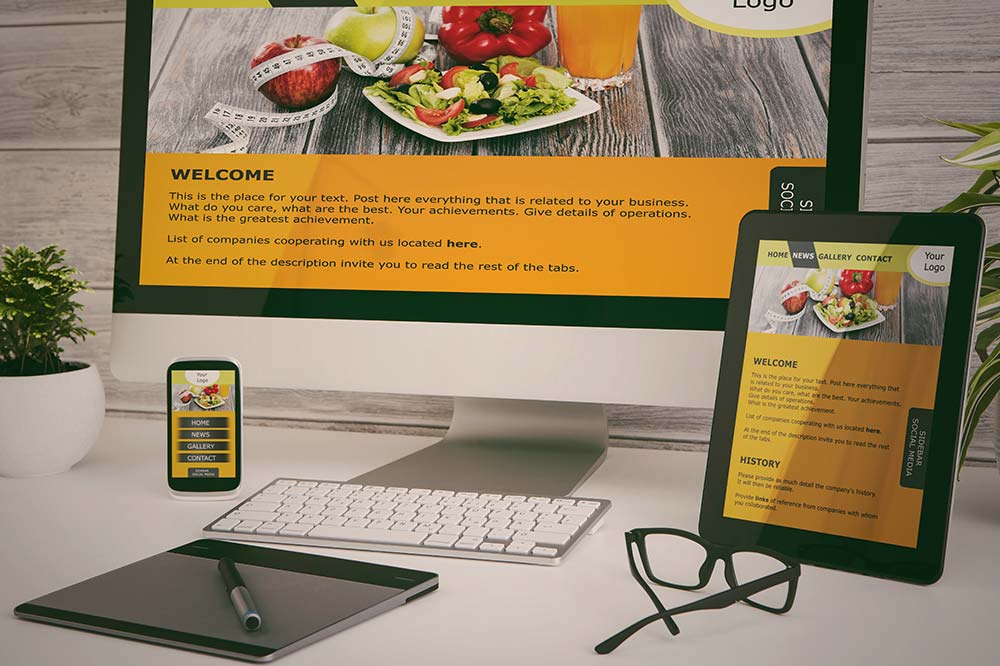Creating a website for your restaurant is one of the most beneficial things you can do for your business. Not only does it increase your marketing reach by providing potential customers with the information they need to select your establishment, but it’s also a great place to advertise what you do and build up a community of loyal consumers outside your immediate area.
However, a restaurant website only works if it’s implemented in the right way. As a business owner, you’ll want your website to match the look and feel of your restaurant perfectly and set the standard of expectation for both new and existing customers. This means avoiding one of the most common pitfalls for a restaurant: copywriting mistakes.
Here’s seven copywriting mistakes and how you can avoid them, ensuring that your website is maximized for success.
1. Including Too Much Text
While text is essential for any website, you’ll want to ensure that you don’t overpower people with too much content. After all, as a restaurant, the images you put on your website should speak to the imaginations of hungry members of the public just as much as your words. Aim for the text to be just as digestible as your main course, by striking a balance between it and your images.
2. Not Implementing Your USP
Every restaurant has a unique selling point (USP), and it’s important that you make whatever it is clear on your website. It doesn’t matter what size you are: you should have something that distinguishes you from your competition. Whether you’re a family-orientated place, specialize in a certain type of food, or even cater for big events, your point of view needs to be clear in the text of your website.
“Without a clear USP, people will automatically try to judge it for themselves,” explains Rachel Alvarado, a Digital Marketer at Essayroo. “In many cases, they simply won’t bother, meaning you’ve missed out on a potential customer.”

3. Forgetting to Showcase Your Personality
Whether you’re a big brand, a chain restaurant, or a single establishment, your website needs to express your restaurant’s unique personality (not necessarily yours as the owner) in order for it to be successful. For this, consider what type of business you are, whether you’re a fine dining restaurant or casual, or something in-between.
This consideration will make it easy to see what kind of language you should be using for your restaurant copy. Not taking this into account means you may be sending the wrong message to potential customers who may be disappointed when your restaurant doesn’t match their expectations.
For more advice on how to incorporate your personality into your content, you can use professional editing tools and services like Academized or State of Writing.
4. Using Poorly Chosen Fonts
It’s very tempting to try matching the style and theme of your restaurant to “fancy” handwritten or romantic fonts, to set the image you want people to perceive you for — especially if you operate in the fine dining space.
However, more often than not, using these type of complicated fonts can make your website illegible. And if they are unable to find the information they’re looking for, your customer could simply put off visiting your restaurant.
Pick a nice, clean, and easy-to-read font (like Arial, Helvetica, or Tahoma) to make sure that you prevent this mistake from becoming a problem. When adding testimonials or reviews, typically in italics, test to make sure they are readable and formatted professionally using free tools like Cite It In.

5. Missing Out on Vital Information
It’s imperative that you remember the primary reason why people visit your restaurant’s website. Customers may have searched for restaurants in your local area and will be looking for something that appeals to them instantly, but if you don’t include basic information (location, hours, menu, reservation contact), you’re going to miss out on customers.
You want to make it as easy as possible for a customer to pick your restaurant over your competition. To help this, you can follow writing guides like the ones found in My Writing Way or Write my paper.
6. Not Considering SEO
As I mentioned above, customers search online for restaurants in their local area — likely the main source of traffic for your website. However, if you haven’t thought about how to optimize your website’s content for Search Engine Optimization (SEO), you may as well be invisible online.
Try listing out a few keywords that you’re going to include in your content before you start writing. These keywords should include what kind of restaurant you are and the area in which you operate. If you aren’t an SEO expert, you might want to consider hiring an SEO professional to better optimize your site.
7. Having Errors in Your Content
Imagine you’re looking for somewhere to eat and you’ve stumbled upon a website. You’re scanning the site to view the menu and hours, only to discover that the content is riddled with spelling mistakes, typos, poor grammar, and misplaced punctuation. What are you going to do?
Chances are good that you’ll leave the website and take your business elsewhere.
This is why it’s important to always double check your content to make sure that it’s perfect. Ask a manager or friend to proofread it for you before uploading it to your website.
As you can see, there are many things you can do to make sure that the content on your restaurant’s website is perfected for a live audience. Avoid these mistakes and you can ensure your business is maximizing its opportunities for success.
Want more tips on building the best website for your restaurant? Download our free ebook “The Guide to a Successful Restaurant Website” today!
Gloria Kopp is a business and a marketing consultant at Australian Help. She works as a part-time content manager at Oxessays and is a writer at Studydemic review writing blog.






